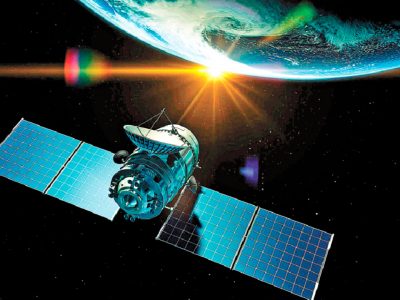A team of engineers from Caltech University in the US is getting closer to the possibility of generating abundant solar power in space. Then transmit wirelessly to the ground. What seemed like a science fiction novel until several years ago is showing encouraging signs of becoming a reality today.
Half a century ago, an article titled “Energy from the Sun” was published Science, explained in detail how this high-tech wireless marvel works. In space where man-made satellites roam, sunlight is not affected by weather. And there is neither night nor day. Solar energy could theoretically be harvested 24 hours a day, completely carbon-free, and then transmitted anywhere on Earth. This concept quickly ended up in a trunk of curious, complicated and expensive ideas.
This is about to change. On January 3, the Caltech team launched the Space Solar Power Demonstrator. It is a set of orbital experiments to test key components for space-generated solar power. It started trading in May and is posting encouraging preliminary results.
“People are realizing it’s not just science fiction. There may be a way to do this,” said Ali Hajimiri, a Caltech electrical engineer and one of the project leaders.
read more: New business models: Renewables will increase by a third by 2023
Energy
Other related initiatives are also gaining momentum. The European Space Agency is preparing a blueprint for a possible European space-solar network. China’s Academy of Space Technology has announced plans for a prototype energy transfer satellite by 2028. And military labs in the U.S. are experimenting with technology that could one day transmit energy from space to distant bases or war zones.
One of the key challenges for all these projects is finding a safe, efficient and reliable way to send gigawatts of electricity to the ground and then convert it into usable electricity for people. So far, microwave rays are the preferred technique because they can travel freely through the air regardless of the weather.
Although they are similar to those used in microwave ovens, these rays are not concentrated. A recent study by the European Commission found that incoming microwave beams are too weak and diffuse enough to harm human health. “The technology is basically the same as wireless charging for your cell phone,” explained Chris Rodenbeck, head of the 2021 Advanced Program Team at the US Naval Research Laboratory in Washington. signals (similar to those used for Wi-Fi signals, but at a higher frequency) from a transmitter about two-thirds of a mile away to a receiver at the Army Research Range in Maryland, USA. Thus, the concept is proven, another thing now is to scale it to orbit.
Information
Researchers are testing transmission technology in space using a bread-sized device called a photoelectric radio-frequency antenna module, or PRAM. It flew aboard the U.S. Air Force’s X-37B space plane and converted sunlight into microwaves, but never actually sent waves anywhere before returning to Earth last year. Rodenbeck works on a series of projects called Arachne run by the Air Force Research Laboratory in Dayton, Ohio. Arachne is designed to tackle the very challenging task of transmitting power from orbit to a ground station. It is scheduled for release in 2025.
One of the key components of the Caltech demonstrator is a prototype power beam called Maple, which stands for Microwave Array for Power-Transfer Low-Orbit Experiment. It generated microwaves and directed them from one part of the satellite to another, lighting up two test LEDs, Hajimiri said. The distance traveled was small, about a foot, but it was the first documented demonstration of power transfer in space. The device directed microwaves toward Earth, which were picked up by Caltech’s detectors on the surface.

